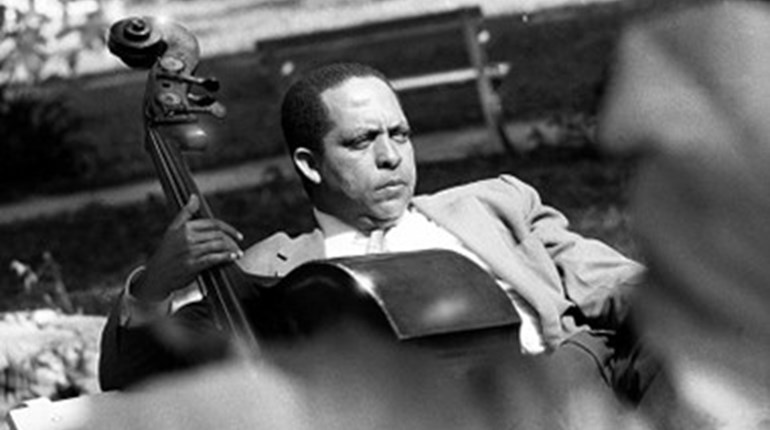Israel López Valdés (1918-2008), better known as Cachao, was a Cuban-born double bassist and composer. Cachao was a pivotal figure in the development of the danzón-mambo through his involvement in the charanga group Arcaño y sus Maravillas. Characterized by violins and flute, charanga ensembles established the danzón as Cuba’s national dance in the 1920s through a uniquely Cuban blend of African- and European-derived musical traditions. Faced with the growing popularity of son, an eastern Cuban genre, groups like Arcaño y sus Maravillas transformed the danzón into the danzón-mambo by adding additional percussion instruments and incorporating more Afro-Cuban elements. In the so-called mambo sections of the danzón-mambo, the conga drums, cowbell, and timbales join the violins in creating rhythmic layers with improvised flute overtop.
Cachao’s contributions to Cuban music didn’t stop there. In the 1950s, he helped pioneer the late-night jam sessions in Havana now famously known as descarga. Based in the jazz idiom of improvisation, these musical experiments encouraged the development of Latin jazz in Cuba and the Cuban diaspora.
Cachao moved to the United States shortly after the Cuban Revolution, performing with bands in New York City and Las Vegas. He settled in Miami in 1978, playing local gigs in relative obscurity. It wasn’t until 1992 that his career resurged, when actor Andy Garcia organized a tribute concert in Miami and financed Cachao… Como Su Ritmo No Hay Dos, a 1993 documentary film about the musician. Garcia then co-produced Cachao’s 1994 Grammy-Award winning comeback album, Master Sessions, Vol.1. with Emilio Estevez. Cachao’s success continued with two more award-winning albums, El Arte del Sabor and ¡Ahora Si! He died in 2008, recognized anew in both the Latin and jazz worlds for his important role in twentieth-century music.
